Sorted by date Results 101 - 125 of 155
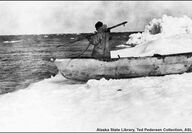
More than four decades ago Congress enacted the Alaska Native Land Claims Settlement Act, which conveyed about 40 million acres to Alaska Native-owned corporations and settled aboriginal land claims. President Richard M. Nixon signed it into law in December 1971. Why was the Native land claims such a big issue after statehood? The Alaska Statehood Act said the new state could choose more than 103 million acres of its land – an amount larger in total area than California – to build its eco...

Homer residents turned to Betty Crocker when they needed a firetruck in the late 1960s after learning about a promotion offered by General Mills. The nationally known company offered a program where people could turn in their coupons for large househlold items. An $800 piano could be purchased with 160,000 coupons redeemed at one-half penny each, according to a Homer Tribune article, titled "Bringing home 'Betty," by Naomi Klouda. How many coupons did it take to get a fire truck? Five million,...

Four small cannons in Sitka, which started out in Unalaska, stand in testimony to Alaska's occupation by Russia and the subsequent transfer of Alaska to America 150 years ago. The Northern Commercial Company in Unalaska donated the cannons to the state of Alaska two years after statehood. The artifacts date back to the 1700s, when Lord Baranof ruled Alaska for Russia as its manager and governor. The antique guns, made of bronze, weighed about 500 pounds each and had the date 1723 stamped on...

Enterprising newsmen published the first issue of the Yukon Press in March 1898. The 14-page effort shared the news of the day from St. Michael to the upper Yukon. With the discovery of gold along Interior rivers and in the Klondike region, thousands of stampeders flooded into the wilderness of Alaska looking for their pot of gold. Circle City, located about 160 miles northeast of present-day Fairbanks, got its start in 1894 as the supply center for the Circle Mining District 50 miles to the...

A pachyderm named Annabelle, who became prolific with a paintbrush and easel, is responsible for the creation of the Alaska Zoo in Anchorage. It all started when Jack Snyder saw a tongue-in-cheek come-on for a Chiffon toilet paper contest for grocers in 1966. The Crown Zellerbach company ad announced: "$3,000 or a baby elephant" to the winner. The Anchorage grocer won the contest. Snyder then startled the tissue paper executives when he said, "I'll take the elephant." One can just imaging the...

Baseball has long been a staple of summers in Alaska. And when Anchorage baseball fans wanted a semi-pro team in 1969, they knew they could count on George "Lefty" Van Brunt to coach the boys of summer from the first base side of the plate. Lefty's career with the Anchorage Glacier Pilots began that year when the Anchorage Community got serious about baseball because the adult league's all-star team could never beat the Fairbanks team. "The Gold Panners used to come down and kick our butts,"...
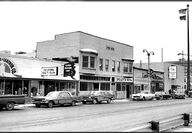
A small spruce that peered skyward in a dense forest on Prince of Wales Island in the mid-1700s found its way to Anchorage when Alaska became America's 49th state. This Southeast Alaska sapling held no importance when Secretary of State William Seward finalized the purchase of Alaska from the Russians on March 30, 1867. And most Americans at the time thought Alaska unimportant, as well, and referred to it as "Seward's Ice Box." But just as Alaska grew in importance for the nation, this little...

While the Southeast town of Sitka claims the first U.S. Post Office established in America's new possession of Alaska in 1867, Circle City – located on the banks of the Yukon River – holds the honor for the first post office in Alaska's Interior, according to "Directory of Alaska Post Offices and Postmasters." Circle City's first postmaster, famous outfitter Jack McQuesten, was appointed on March 19, 1896. Mail had been carried by private mail runners that traveled along a route from the new...
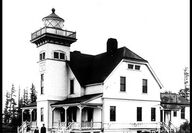
The discovery of rich gold deposits in the upper Yukon River in the late 1890s brought a massive rise in the number of ships plying Alaska waters. Especially in Lynn Canal, a part of the Inside Passage. It was a safer route for ships to travel than the open ocean route to the west through the eastern Gulf of Alaska. But once the ships passed British Columbia, they had few guides through the Inside Passage. Weather and terrain in Southeast Alaska made traveling perilous – fog, rain, strong t...
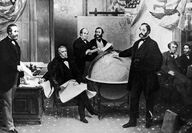
"Russia has sold us a sucked orange," the New York World proclaimed after the U.S. government announced it was to purchase Alaska from Russia for $7.2 million in the spring of 1867. And most Americans agreed with this opinion 150 years ago this month. The historic decision was greeted with derision and a multitude of catcalls aimed at then Secretary of State William H. Seward. Terms bandied about for the tract of land that was one-fifth the size of the Continental United States included...
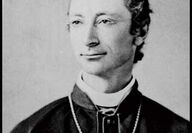
When Archbishop of Vancouver Island Charles John Seghers journeyed down the Yukon River in November 1886, he had no way of knowing he would never return to civilization. The Catholic priest, who originally came from Belgium, had spent many years doing missionary work in Canada and Alaska. Seghers first came to Alaska in 1873, as it was included in his diocese. He made five visits to the Great Land and set up a temporary headquarters in Nulato. In 1878, he was appointed Coadjutor Archbishop of...

While many Alaskans celebrated Christmas on December 25, others from the Pribilof Islands to Nikiski to Sitka observe Christmas in January. That's because they observe the Russian Orthodox Church calendar. The Russian Orthodox Church still uses the Julian calendar, where each day occurs 13 days after the corresponding day on the modern Gregorian calendar. So January 7 is their day of rejoicing the birth of Christ. The Alaska Native people's relationship with the Russian Orthodox Church dates...
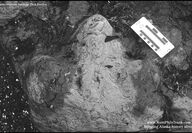
My two-year-old grandson is crazy about dinosaurs. So much so that we decorated his birthday cake with small brontosaurus, nanosaurus and T-rex replicas. He received an abundance of dinosaur-themed gifts, too, including dino sippy cups, dino books, dino imprinted T-shirts and a multitude of dinosaur toys. I went to bed that evening and dreamt about dinosaurs all night! When I woke up, I still was thinking about T-Rex and his buddies. Then something rang a bell in my memory bank about dinosaurs o...
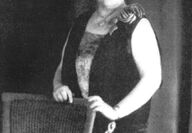
Anyone interested in the Klondike gold-rush era has heard of the infamous Klondike Kate, a dancehall gal who mesmerized miners with her moves. Kathleen Rockwell earned quite the reputation for her flirtatious dancing. But there was another girl named Kate who also traveled north and gained some notoriety as a cook, nurse and jailer. Ill-fated love led this Canadian girl to set out for the Klondike in 1898. When Katherine Ryan heard newspaper boys shouting out the headlines about gold found in...
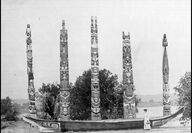
When John Green Brady, governor of the District of Alaska, was asked to create an exhibit to publicize the Great Land for the Louisiana Purchase Exposition in St. Louis in 1904, he decided to showcase one of Southeast Alaska's most recognizable features: totem poles. Brady thought a display of poles carved by Alaska's Native people would draw crowds to the exhibit where they then could learn about the real Alaska – not an icebox, but a land that offered much for tourism, settlement and developme...
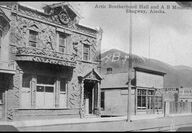
What Alaska connection do England's King Edward VII, Al Capone's chief legal counsel, Albert Fink, and American presidents Warren G. Harding, Theodore Roosevelt and William McKinley have in common? They are all honorary members of the Arctic Brotherhood club. This fraternal club, which at its height boasted around 10,000 members in the early 1900s, was the brainchild of sea captain William Connell, a hospitable man who had a reputation for keeping company with his passengers aboard the steamer,...
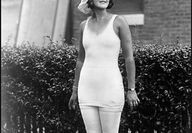
Dubbed The Arctic Venus by newspapers across the globe, Helmar Liederman turned many heads as she strutted her stuff in 1922 during the Inter-City Beauty Contest – forerunner of the Miss America Pageant. The 23-year-old beauty, who immigrated from Sweden in 1921, proved to be one of the most popular contestants of the 57 that entered the Atlantic City event. Only 10 girls had competed in the inaugural contest the previous year. "A real beauty from the north country, Miss Helmar Liederman of June...
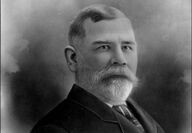
Many have heard tales touting the shenanigans of conmen like Jefferson "Soapy" Smith and a man named Hendrickson, better known as the "Blue Parka Bandit." But neither of them caused the demise of an Alaska governor's political aspirations. That dubious honor falls upon H.D. "Harry" Reynolds, who singlehandedly brought down Gov. John Brady in 1906, according to a 1984 article written by Alaska historian Stephen Haycox for the Anchorage Daily Times. Brady came to Alaska in 1878 as a protégé of m...
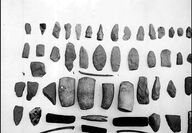
Theories about how and when Alaska became inhabited with people ebb and flow like the state's rivers. Archeologists pretty much agree that Alaska's mainland was physically and ecologically a part of Asia 10,000 years ago, and that the Bering Strait was a grassy land area that separated the Bering Sea to the south and the Chukchi Sea to the north. While the picture of who crossed the land bridge and when is still murky, the strongest hypothesis leans toward people crossing over from Asia in waves...
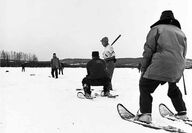
As the days get longer and winter begins to wane, it's safe to assume that the boys of summer are preparing for another awesome season of baseball – a mainstay in Alaska for generations. Before Anchorage had plotted out its main street on Fourth Avenue in 1915, baseball teams faced off near the mud flats to put bats to balls that Fourth of July. Following statehood in 1959, Alaska attracted a multitude of collegiate players who played for teams like the Anchorage Bucs, Alaska Glacier Pilots, Pen...

An abundance of gamblers, con men and thieves made their way north following the discovery of gold in the Klondike in the late 1890s. And with no official lawmen to take care of evildoers, miners took the law into their own hands and dispensed frontier justice. Murder was punished by hanging; stealing meant a sound whipping or banishment. After Alaska became a territory in 1912, Alaskans turned away from hanging and whipping offenders but kept their tradition of banishment to deal with...
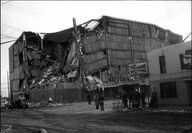
The second-largest earthquake in recorded history struck at 5:36 p.m. Anchorage time. Measuring 8.4 on the Richter scale, experts later upgraded it to 9.2 on the Mw (moment magnitude) scale as the Richter scale was determined to be inaccurate at measuring earthquakes above 8.0. Many Alaskans later said they lived through hell on earth during those 4 minutes and 38 seconds of violent shaking and the tsunamis that followed. The temblor's epicenter was located about 75 miles southeast of...
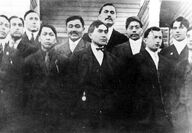
After decades of oppression by Russian fur traders, and then American interests, the Natives of Southeast Alaska decided it was time to organize into a united voice to change the way people perceived them and to better their circumstances in a land that their ancestors had inhabited for thousands of years. A dozen men and one woman from Sheldon Jackson Training School (later known as Sheldon Jackson College) met in 1912 and wrote a charter for what became known as the Alaska Native Brotherhood....
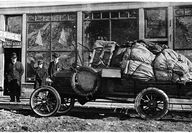
One of Alaska's early pioneers, who died 33 years ago this month at age 99, left his mark on early Alaska transportation. Robert E. "Bobby" Sheldon built the territory's first automobile, drove the first car down the Richardson and opened the first auto stage line. Born in 1883 in Snohomish, Wash., Sheldon and his father arrived in Skagway along with thousands of others in search of golden riches. The pair postponed their plans when they learned the Canadian government required each person...

Sled dogs have a long and illustrious history in the North Country, from the early days of Native settlements to the gold-rush booms during the 1890-1900s. Natives of Alaska, northern Canada, Greenland and Siberia used dogs as winter draft animals for centuries. Russians arriving in western Alaska during the early 1800s found Alaska Natives using dogs to haul sleds loaded with fish, game, wood and other items. The Natives ran ahead of the dogs as they guided them on the yearly trips between...